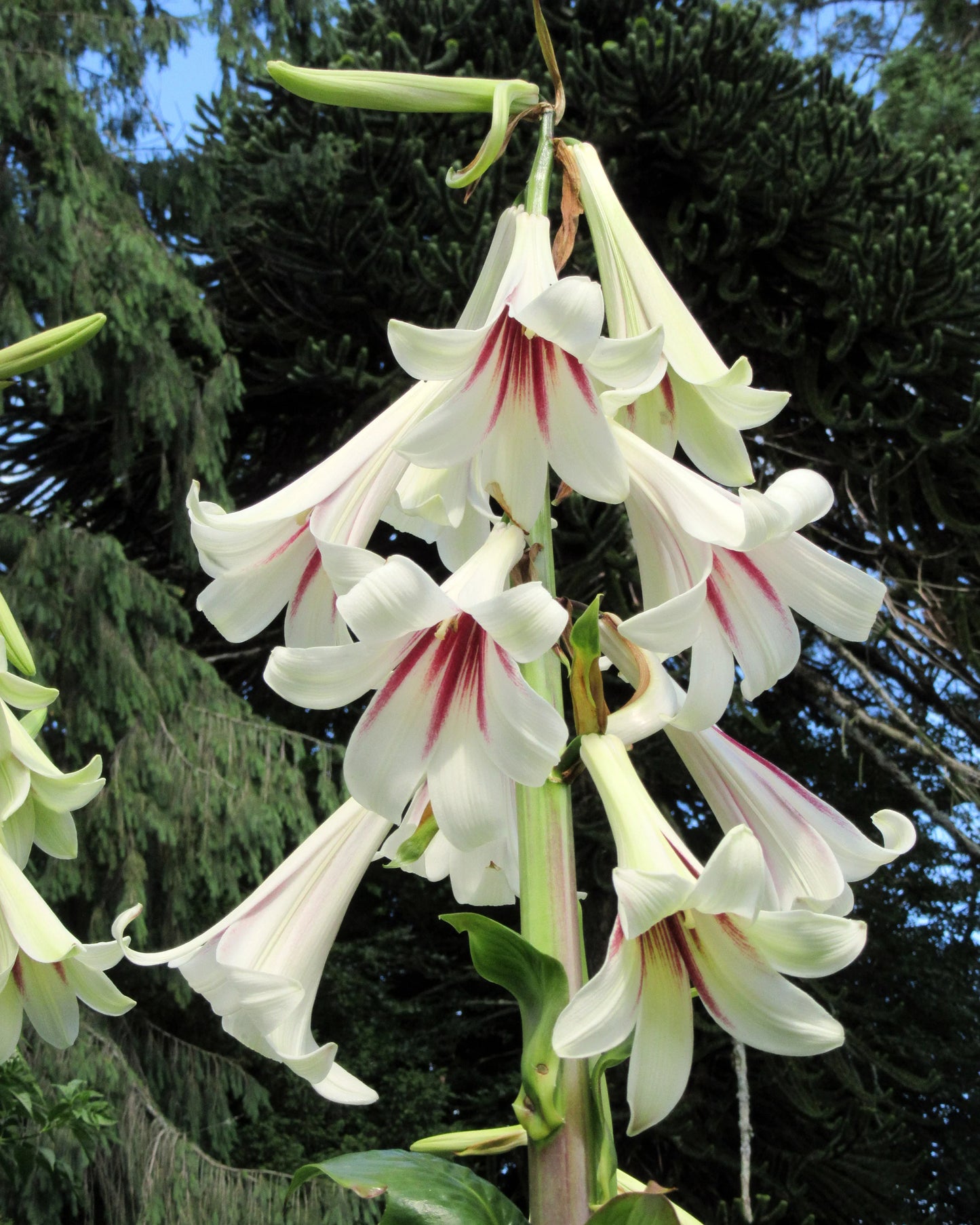Giant Himalayan Lily
Couldn't load pickup availability
Description
The Giant Himalayan Lily (Cardiocrinum giganteum) is a remarkable perennial known for its towering height and large, fragrant, trumpet-shaped flowers. Native to the Himalayas, this plant is a striking addition to gardens, especially in shaded or woodland areas.
Features and Specifications:
Flower Color and Form: The Giant Himalayan Lily produces large, creamy white flowers with a reddish-purple center. These trumpet-shaped blooms emit a sweet fragrance, adding both visual appeal and scent to the garden.
Plant Height and Spread: This species can reach impressive heights, typically growing between 7 to 9 feet tall (2.1 to 2.7 meters). The plant has a spread of about 2 to 3 feet (60 to 90 cm), making it suitable for the back of borders or as a focal point in shaded garden areas.
Foliage: The plant features large, glossy, hosta-like leaves that emerge early in the spring in a rosette, providing a lush backdrop to the flowers.
Sunlight Requirements: Prefers part shade to full shade, thriving in woodland settings or areas with dappled sunlight. While it can tolerate full sun, especially in cooler climates, it may require additional watering and protection from intense midday heat.
Soil Type: Requires moist, humus-rich, well-drained soil. Incorporating organic matter can improve soil fertility and drainage.
Hardiness Zones: Suitable for USDA zones 6 through 9. In cooler climates, it can be grown as an annual or the s can be dug up and stored over winter.
Bloom Time: Blooms in late spring to early summer, typically in June, providing a burst of color and fragrance during this period.
Planting Instructions:
Planting Time: Plant s in the fall, allowing them to establish roots before winter. In warmer climates, early spring planting is also suitable.
Planting Depth and Spacing: Plant s about 6 inches deep and space them 12 to 18 inches apart to accommodate their mature size.
Watering: Keep the soil consistently moist but not waterlogged. Once established, the plant is moderately drought-tolerant.
Fertilization: Apply a balanced, slow-release fertilizer in early spring to promote healthy growth and abundant flowering.
Maintenance: Remove spent flowers to encourage continuous blooming. In colder climates, dig up the s before the first frost and store them in a cool, dry place over winter.
Key Benefits:
Aesthetic Appeal: The towering height and large, fragrant flowers make the Giant Himalayan Lily a dramatic focal point in shaded garden areas.
Wildlife Attraction: The sweet fragrance and large blooms attract pollinators such as bees and butterflies, supporting local ecosystems.
Low Maintenance: Once established, the Giant Himalayan Lily is relatively easy to care for, requiring minimal maintenance beyond regular watering and occasional fertilization.
Incorporating the Giant Himalayan Lily into your garden can provide a stunning display of height, fragrance, and visual interest, enhancing the beauty of shaded or woodland areas.













